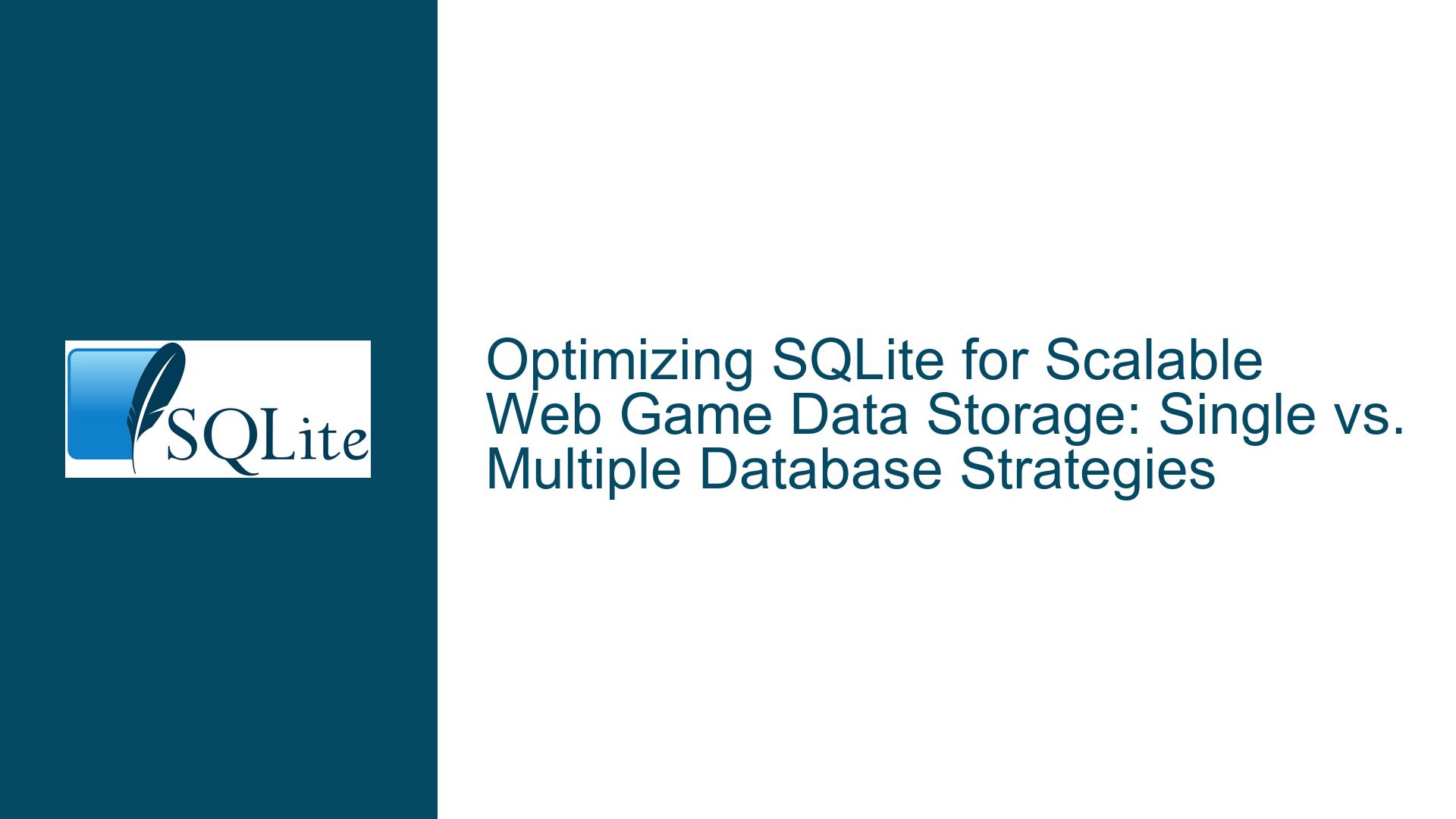Optimizing SQLite for Scalable Web Game Data Storage: Single vs. Multiple Database Strategies
SQLite Database Scalability for Web Game Data Storage
When designing a web game that requires persistent user data storage, one of the most critical decisions is choosing the right database architecture. SQLite, a lightweight, serverless, and self-contained database engine, is often considered for such applications due to its simplicity and ease of deployment. However, the decision to use a single SQLite database versus multiple SQLite databases (one per user) requires careful consideration of scalability, performance, and maintainability.
In a web game scenario, each user generates a significant amount of data over time, potentially thousands of rows per user. The primary challenge is ensuring that the database architecture can handle this data efficiently while maintaining fast query performance, even as the number of users grows. The initial idea of creating a separate SQLite database for each user might seem appealing, as it isolates user data and could theoretically reduce query complexity and improve performance. However, this approach introduces several challenges, including database management overhead, schema migration complexity, and potential file system limitations.
A single SQLite database, on the other hand, centralizes all user data, simplifying management and enabling more efficient querying across users. However, this approach requires careful indexing and optimization to ensure that performance does not degrade as the dataset grows. Additionally, write concurrency can become a bottleneck in high-traffic scenarios, as SQLite’s locking mechanism can limit simultaneous write operations.
Premature Optimization and Write Concurrency Challenges
One of the key issues raised in the discussion is the risk of premature optimization. The assumption that creating separate databases for each user will inherently improve performance is not always valid. In fact, this approach can lead to unnecessary complexity and inefficiencies, particularly if the number of active users is low or if the data access patterns do not justify the overhead of managing multiple databases.
SQLite’s write concurrency model is another critical factor to consider. While SQLite handles read concurrency well, especially when using Write-Ahead Logging (WAL) mode, write operations are serialized by default. This means that only one write operation can occur at a time, which can become a bottleneck in scenarios with high write throughput. Splitting data across multiple databases can mitigate this issue by distributing write operations across different files. However, this solution comes at the cost of increased complexity in managing and querying data across multiple databases.
The decision to use multiple databases should be based on empirical evidence of performance bottlenecks rather than assumptions. Profiling the application under realistic load conditions can help identify whether write concurrency is a significant issue and whether the benefits of multiple databases outweigh the associated costs.
Implementing PRAGMA journal_mode and Schema Migration Strategies
To address the challenges of scalability and performance in SQLite, several strategies can be employed. One of the most effective is enabling Write-Ahead Logging (WAL) mode using the PRAGMA journal_mode=WAL command. WAL mode significantly improves write concurrency by allowing multiple readers and a single writer to operate simultaneously. This can alleviate some of the performance issues associated with high write throughput, making it a viable option for web game data storage.
Another critical consideration is schema migration. In a single-database architecture, updating the schema is straightforward, as changes need only be applied once. However, in a multiple-database architecture, schema changes must be propagated across all user databases, which can be complex and error-prone. Automating schema migration using scripts or tools can help mitigate this issue, but it adds another layer of complexity to the system.
Backup and recovery strategies also differ between single and multiple database architectures. A single database can be backed up as a single file, simplifying the process. In contrast, backing up multiple databases requires a more sophisticated approach, such as creating a script to iterate through all user databases and perform backups individually. This can be time-consuming and resource-intensive, particularly as the number of users grows.
Finally, indexing plays a crucial role in optimizing query performance in a single-database architecture. Properly designed indexes can significantly reduce query times, even as the dataset grows. However, over-indexing can lead to increased storage requirements and slower write performance. Therefore, it is essential to carefully analyze query patterns and create indexes that balance read and write performance.
In conclusion, while SQLite is a viable option for storing web game data, the choice between a single database and multiple databases requires careful consideration of scalability, performance, and maintainability. Implementing WAL mode, optimizing indexes, and developing robust schema migration and backup strategies are essential steps in ensuring that the chosen architecture meets the needs of the application. By avoiding premature optimization and basing decisions on empirical evidence, developers can create a scalable and efficient data storage solution for their web game.






